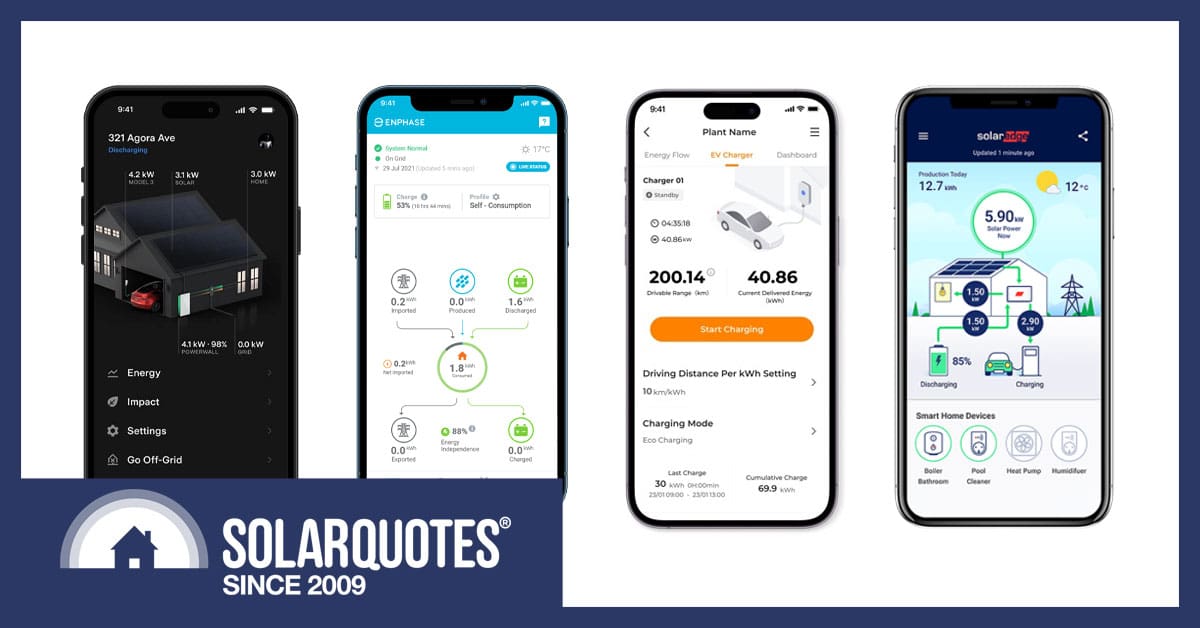
Tesla, Enphase, Sungrow & SolarEdge Apps. Some apps are better than others – so try before you buy.
While new solar, battery and EV charging products are always arriving, some have become running jokes in the solar industry because promises of ‘here by Xmas’ often lead to questions about ‘which Xmas?’ If you’re tired of waiting for a unicorn to arrive in Q5, then read on as we outline what’s already available to Australian installers to generate, store and manage energy, plus charge an EV or two.
Yesterday, I outlined why solar ecosystems are the new black. If this terminology is new to you, head back to find out why.
What Brands Offer What?
We’ve put together the following table outlining where all the brands we trust sit in terms of a full ecosystem offering:
So Goodwe, Delta, Fimer, iStore, Fronius, Enphase, SolarEdge, and Tesla all have a full inverter/battery/EV charger ecosystem.
Sungrow and iStore are making promises for this year.
Here’s an overview of each company’s offerings. Our hybrid inverter, battery, and EV charger comparison tables provide the nitty-gritty details of all the products.
Goodwe
Goodwe has a range of hybrid inverters, with the ET, ES G2 and EH series.
For batteries, they have the Lynx Home F and Lynx F G2 series of modular batteries and the Lynx Home U low-voltage battery.
For EV chargers, they have their HCA series, and feedback from those I know installing them says they compare well with Fronius.
Delta
Delta offers hybrid E5 and H8-10E inverters paired with its BX 6.3AC battery. Its AC Mini/AC Max EV chargers round out its offering. As we’ve outlined before though, the Delta battery warranty is a bit sickly.
Sungrow
Sungrow’s SHRS and SHRT hybrid inverters pair with their SBR HV and new SBH batteries.
They’ve just released the SHT three-phase hybrid inverter range, which has impressive specs, including full 63A pass through, with claimed backup from 32A to 52A per phase! Much better than the previous SHRT three-phase offering, though both should be installed with a bypass switch.
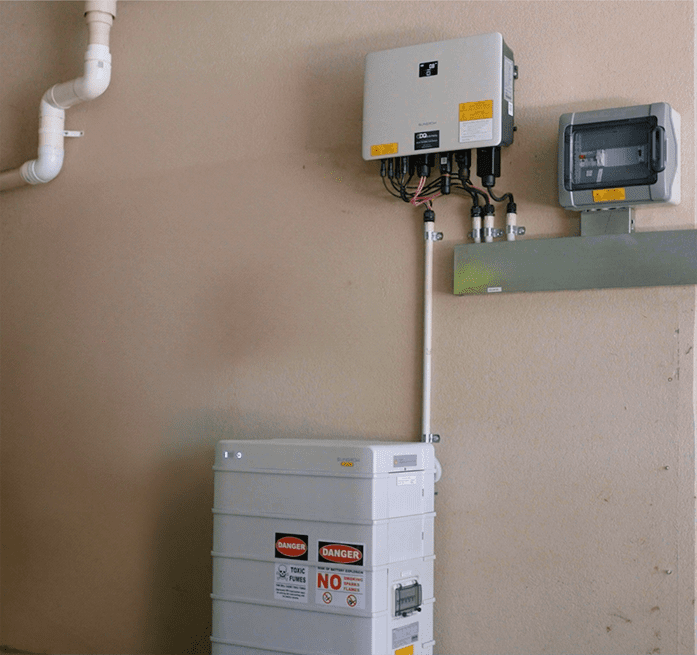
Finn’s Sungrow setup (SH5.0RS inverter and SBR HV battery) on his rental property.
Right now, the only Sungrow EV charger is a 30kW DC unit, suited to a light commercial application. However, it can be throttled, so if you have a limited 3-phase supply and perhaps a BYD car that requires DC to charge over 7kW, then it could be a very useful option.
The AC variant of the Sungrow EV charger was promised this year, and we’re waiting with bated breath.
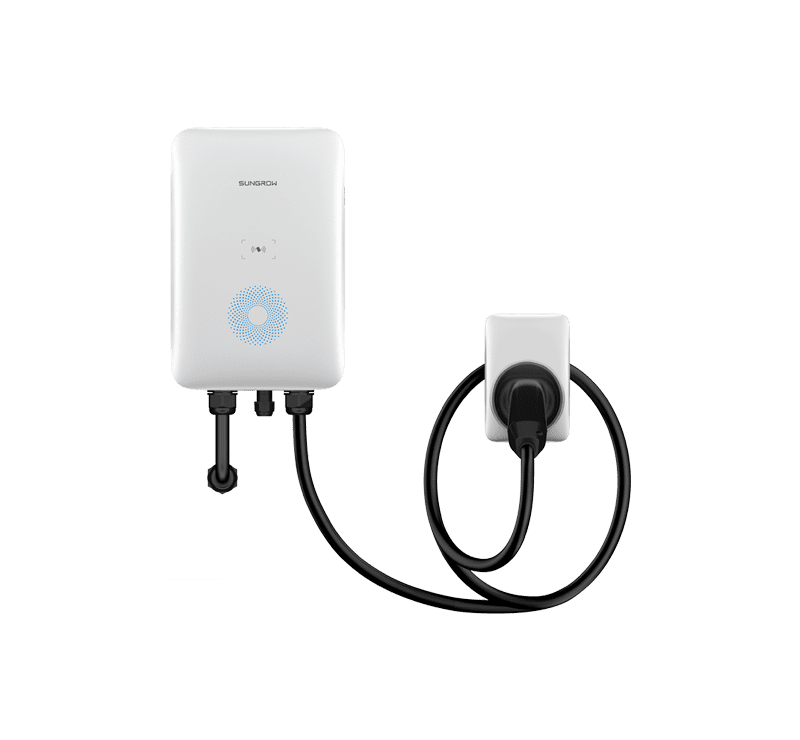
Sungrow’s soon-to-be-released EV charger
Fimer
Fimer has their REACT 2, an all-in-one unit expandable in 4kWh increments.
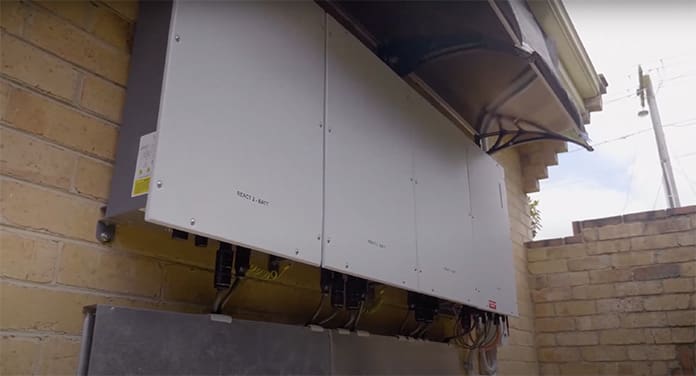
A clean-looking install from a Fimer case study. Far-right module is the inverter, modules to the left are batteries.
Their FLEXA AC Wallbox is their EV charger offering.
iStore
iStore has taken over where Huawei left off. With a local office and locally hosted monitoring and support, iStore has its HYBRID inverter range, with single and 3-phase options. Their modular Smart Battery is available in 5kWh increments. Their EV charger is yet to launch in Australia, but I’m told it’s coming soon.
Fronius
Well-developed, well ahead and ever-popular Fronius has its new series of Gen24 inverters, designed to pair with BYD batteries from the HVS and HVM range.
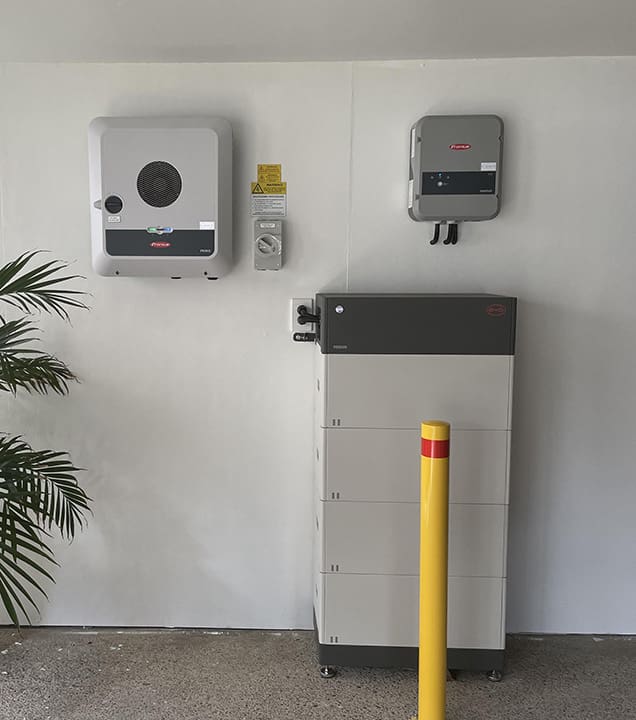
Gen24 and BYD install, done by client DJM Electrical
The award winning Fronius Wattpilot EV charger completes the ecosystem, with the Wattpilot Go offering unique portability.
If you live in Queensland, Wattpilot is currently the only option for the network’s mandated dynamic charging protocols.
Enphase
Enphase has recently launched its IQ8 battery, expandable in 5kWh increments, along with its IQ EV chargers.
While it would be nice to see Enphase open up their API access so that other technologies could be affordably integrated, we’re not holding our breath because, to date, they’ve been quite reluctant to play nicely with other companies.
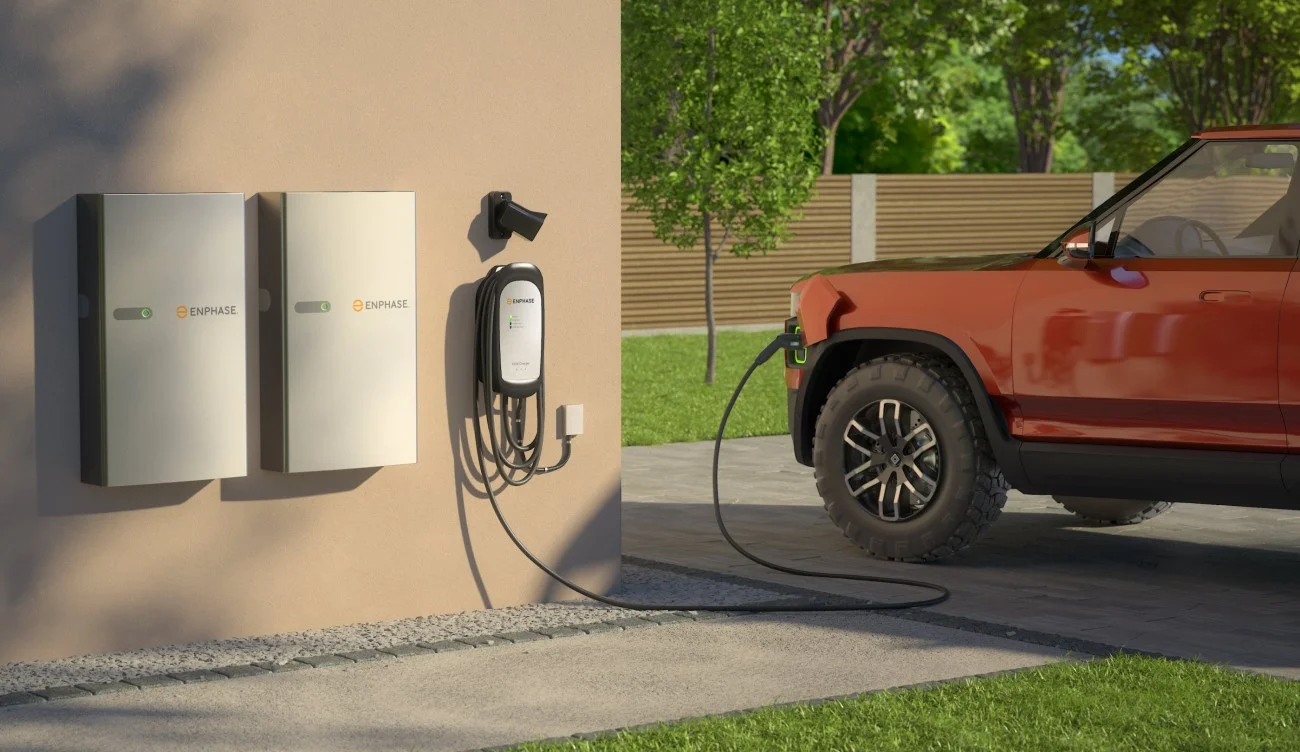
Enphase IQ5 batteries and IQ EV charger with IQ Microinverters likely on the roof.
SolarEdge
SolarEdge offers their “Energy Hub” single-phase hybrid inverters, 10kWh Home Battery, and EV charger.
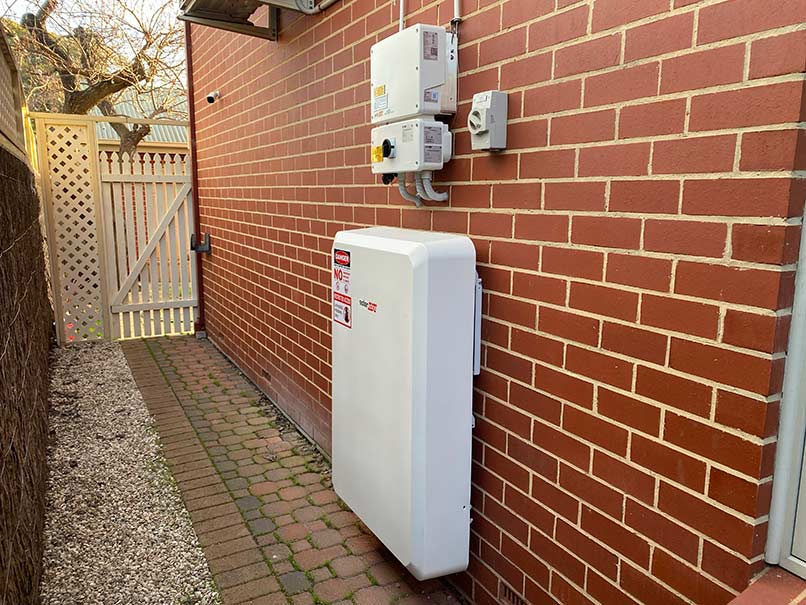
A SolarEdge 10 kWh home battery and Energy Hub inverter.
Although they had a false start some years ago, SolarEdge promise a 3 phase option is nearly here.
The beauty of the SolarEdge app is that priorities are readily customised, so you can choose where your excess solar is going.
However, if you have special storage profiles (e.g., cheap time-of-use retail deals), they can’t be easily controlled via the app. You’ll need to ring your installer to tweak settings if you want to take advantage of “happy hour” charging from the grid. This will hopefully be handed over to the end customer in a future software update.
Tesla
Ever popular Tesla has its Powerwall 2 battery and Wall Connector EV charger.
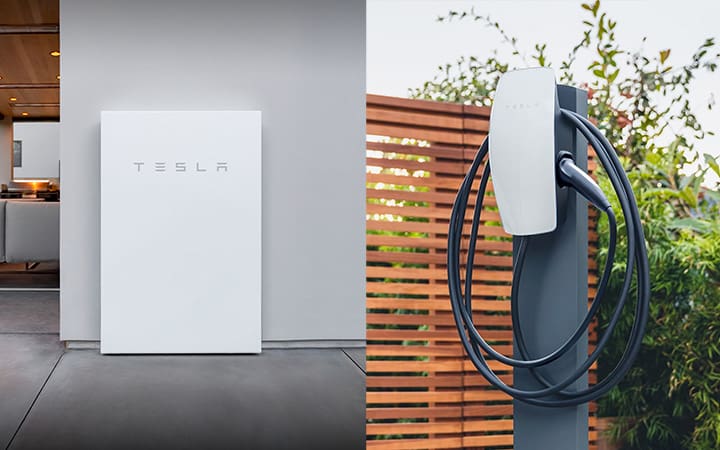
The excellent Powerwall 2, and adequate Wall Connector
By year’s end, it will launch its Powerwall 3 battery in Australia, an all-in-one unit containing a solar inverter.
The Tesla wall connector has no smart charging features other than a simple timer1. However, if you have a matching Tesla vehicle and Powerwall, smart charging is done by the car itself using the Powerwall to measure energy flows. Smart charging in non-Powerwall homes often uses third-party software such as chargeHQ to talk to the Tesla car and control charging.
But in the Tesla Wall Connector’s defence, with more energy retailers offering TOU deals for dirt cheap or free energy at fixed times, a dumb timer makes smart solar charging much less relevant.
Seek Out Support
If you’re going to invest heavily in solar, battery and EV, it’s worth seeking out a working example where all the devices you have, such as Battery, EV charger(s), hot water, etc, are coordinated. Then ask for a live demonstration of how the technology works.
Get a device with the appropriate app installed, then get the salespeople to explain while you finger the screen yourself. That’s the best way to get a feel for it and ensure the whole package does what it says on the tin.
Footnotes
- and demand management if you have more than one unit and don’t want to trip the main breaker ↩

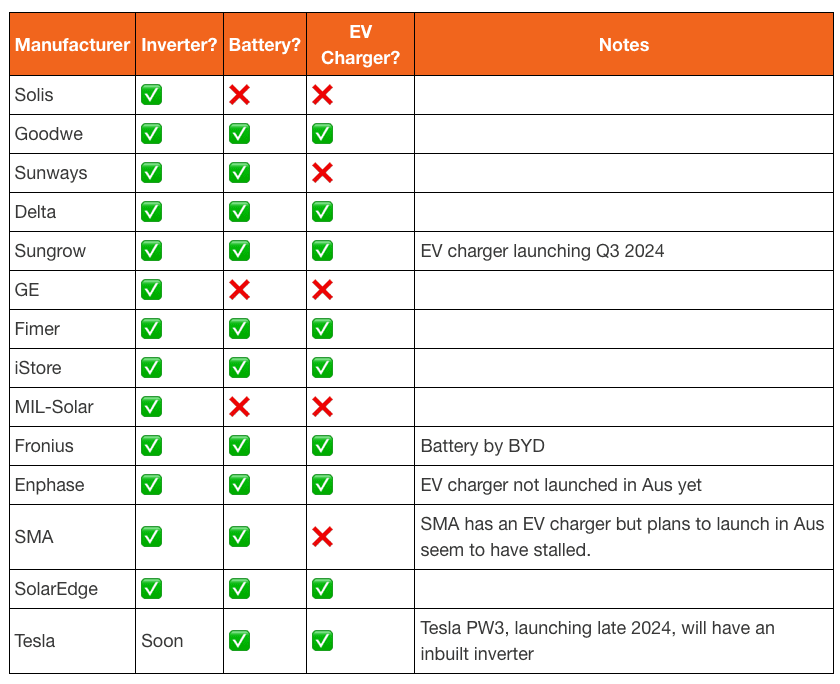
 RSS - Posts
RSS - Posts



We have two Fronius inverters (house 6kW + garage 4.5kW solar) with BYD battery (10kWh) and a Selctronics inverter (since 2018) has worked very well.
Surprised Australian made good quality inverter Selctronics did not rate a mention.
Almost every report or evaluation about solar ( which; I for one am grateful for) has to do with these products being evaluated once added to existing buildings.
I am considering a new build and I am having to consider the current material supply issues with a traditionally built home.
To offset any delay issues I am considering a factory built home.
Naturally one would hope that it would be more cost effective and less lumpy looking to have everything from the panels to the battery /batteries to the car charger and solar water heating installed at the same time BEFORE the cladding or internal walls are finished.
To your knowledge (in Brisbane) are you aware of this energy intergradation already happening?
I Owner Built in Tenterfield a decade ago and after running out of Synapses trying to work out what was which with Solar, I came across Solar Quotes and “outsourced” the task to them.
That solved that problem.
As part of the O/B process I drew up my own Plans. My Power lead to the House goes underground and into the normal external monstrosity on the outside wall. I then had the the main power cables re-routed to the Garage built-in into the House, to a Sub-Board. From which everything is run.
So everything hangs off my Garage Wall.
Finn, if you want to give my email to Steven Fennell, I’m okay with that as I only live 300km from Brisbane
Missing:
Victron which has all these categories and more
A new column breaking out inverters and batteries for high voltage or low voltage
A breakdown of EV chargers by type of voltage DC to AC to DC or DC to DC
A breakdown of EV chargers by type of direction: one direction or bidirectional
Victron are not certified for grid-tied connection in Australia.
What about Growatt?
I know they didn’t have a great reputation a decade ago, but they have stuck around and matured into a comprehensive system. I think they have a solid ecosystem at least as competitive as any other. Not that I have one yet, but I am looking at a commercial hybrid system next year.
Hi Anthony,
Appreciate the detailed article you’ve written, you’ve clearly done a lot of research on though. I’m perplexed as to why you haven’t included Growatt though. Growatt was the number 2 Inverter brand in the world in 2023, with 9.0% market share just behind Enphase Energy who had 9.9% in 2023 and as you know they do Micro inverters which I wouldn’t classify as a standard Inverter per se.
My only concern for SolarQuotes is a bias toward certain brands so it would be appreciate if you could clarify why they have been left out?
Thank you once again for your ongoing support of the industry. I love what you guys do and will continue to endorce your site to people who need up to date Solar advice.
Hi. Love your research and advice. Sadly there appears to be no information for those of us who are about to start building and having to go fully off grid. We want a fully integrated system- no messing about trying to mix and match as most of our quoters have done. What do you recomnend here on the Mid North Coast of NSW?
Thanking you kindly, Helen
Off grid is a little different. Apex Solar in Port Macquarie are great – and could quote you for a Fronius/Selectronic/BYD off grid system – with Fronius EV charger if required. Although that sounds ‘mix and match’ the Selectronic and Fronius and Power Plus are all engineered to work well together off grid.
We have had the system described of 2 x Fronius inverters, Selectroics Inverter and BYD battery described above since 2018 which is normally grid connected, as per my comment above on the 18th.
However, it is designed to work off grid and does so very well. We live 14km from town (no town water supply) and as part of our bush fire protection plan we have a few sprinklers around our house that run on our 10kWh BYD battery and Selectronics inverter. It is seamless as long as BYD battery has charge, 65ms switching from grid to off grid.
Not impacted by bushfire since 2018, though close call in 2019/2020 fires.
In a couple of blackouts have not noticed except when neighbours have called to ask “How come your lights are on?”
We like and trust our BYD/Selectronic/Fronius system
Hi Helen,
There’s also Mike Haydon of The Off-Grid Shop up your way. He’s been doing off-grid for 15 years, and designed my brother’s 19 kW DC + AC coupled setup, now expanded to around 25 kWh of batteries, and EV charger added. (He went for Zenaji LTO, but plain LFP is far too competitive now, and very good lifetime vs price. He wanted high charging power flow for opportunistic energy harvest in intermittent cloud. I have the same ability with 46 kWh of LFP – the larger capacity is a cheaper way to high power flow at medium C rate, especially if you shop wisely for the batteries. And battery capacity is what it’s all about when you’re off-grid.)
Thankyou!